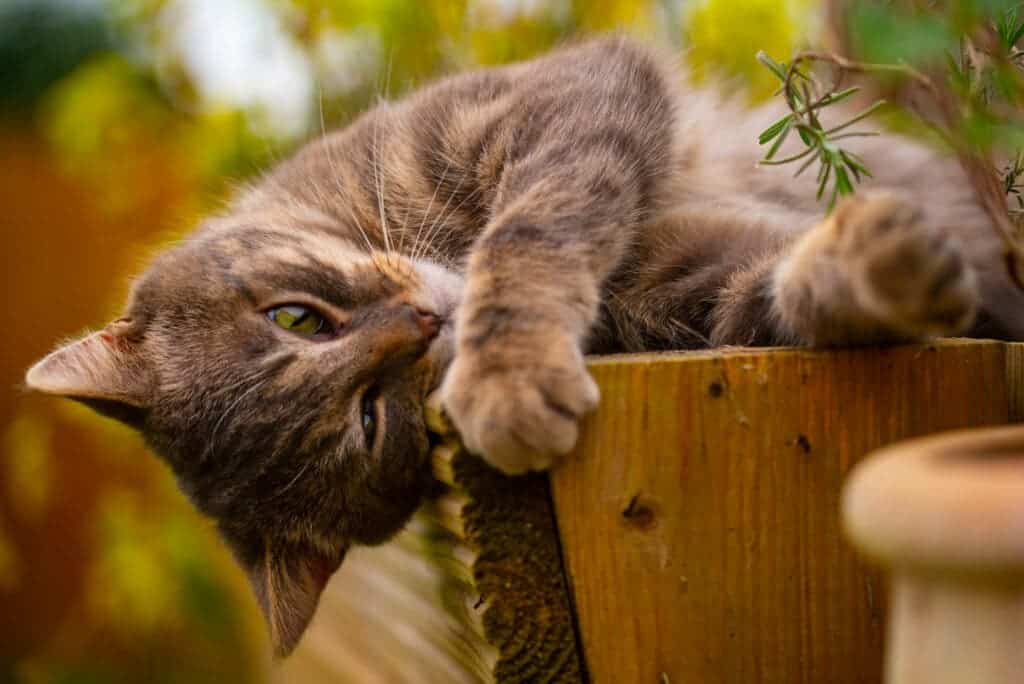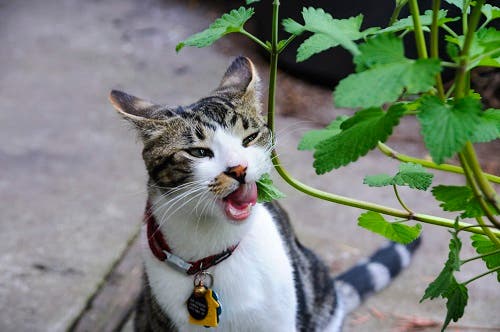
A whiff of catnip can send cats into a frenzy but it can also make mosquitoes buzz off. The plant’s active ingredient, nepetalactone, is a super effective natural insect repellent and scientists have only recently found out how catnip keeps insect pests at bay while at the same time driving felines of all shapes and sizes completely nuts.
Catnip (Nepeta cataria) is a minty, lemony herb originally from Europe and Asia, although you can also find it growing in the Americas, particularly along roads and highways. Felines, from domestic house cats to lions, exhibit an intoxicated response when sniffing catnip characterized by licking and chewing the plants, as well as face and head rubbing against the plants and rolling over on the ground. There are no pathophysiological effects though — catnip is completely harmless to cats.
That’s common knowledge for any cat owner. What may be news to you is that catnip has a long history of use both as herbal medicine and as a powerful insect repellent in Asia, particularly in China and Japan. In fact, studies suggest that catnip compounds could be just as effective, if not more, at warding off mosquitoes as DEET, the most widely used synthetic insect repellent. Same plant, two completely different effects.
This disparity can be attributed to a class of structurally related iridoids, in particular to two isomers of nepetalactone. A study from March 2021 by researchers at Northwestern University found that the insect repellent effect is owed to interactions with a pain and itch receptor called TRPA1.
Humans, along with most mammals, also have TRPA1 receptors but the plant has no effect on us.
“We discovered that catnip and its active ingredient nepetalactone activate the irritant receptor TRPA1, an ancient pain receptor found in animals as diverse as flatworms, fruit flies and humans,” said Marco Gallio, an associate professor of neurobiology at Northwestern. “We now think catnip is so aversive to so many insect species because it activates this widespread irritant receptor. What is particularly interesting is that, unlike wasabi or garlic compounds that also activate these receptors in humans, catnip appears to selectively activate the insect receptor. This explains why humans are indifferent to it, and provides a serious advantage for its use as a repellent.”
Plants like catnip and silver vine (Actinidia polygama) likely evolved to make a chemical that activates TRPA1 as a defense mechanism. Catnip’s ancestors weren’t worried by mosquitoes or fruit flies, but they are now all repelled due to the blanket effects against insects, plant-nibbling or not, of the catnip compounds.

These findings suggest that catnip compounds could be used as a great, natural insect repellent. We could take some cues from cats, which wisened up to this millennia ago. Also in a 2021 study, researchers in Japan found that the feline automatic response to nepetalactone is owed to activation of the μ-opioid system, which is known to regulate euphoric and rewarding effects in humans.
The Japanese researchers go on to add that the characteristic, adorable-looking response that cats have to catnip suggests an important adaptive function for cats. According to the researchers, the rubbing and rolling against the plants transfers nepetalactone onto the fur for chemical defense against mosquitoes and possibly against other biting arthropods. The fact that so many species of wild big cats share the same response supports this evolutionary hypothesis.
“As a consequence, this reduces the number of A. albopictus mosquitoes that land on the animal’s head, helping to protect from mosquito bites. These findings provide new insight into this well-known and characteristic plant-induced feline response, for which the biological function was first questioned in popular science culture more than 300 years ago,” the scientists wrote in the journal Science Advances.
While catnip doesn’t make humans high, we could learn a thing or two from feline herbal medicine, especially in those tormenting summer nights at the height of mosquito season. I know I’m stocking up on catnip spray on my next camping trip.









